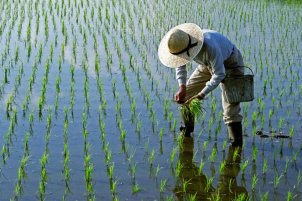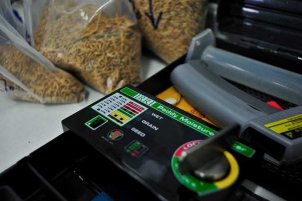This post by Nextech Agri Solutions aims to provide practical knowledge necessary for small-scale farmers entering the rice production business. Beginning with the pre-planting activities, this post will cover the rice varieties to choose from, information on seed quality, crop calendar and land preparation.
These are 4 of the most important activities before the rice planting, and needs to be taken care of if one anticipates a high, prosperous yield.
1. Selecting the rice variety
It’s fairly important to begin with healthy seeds of a locally adapted rice variety. This ensures that the crop has a high yield and attracts good market price, and is also cheaper than importing high-potential varieties from other countries.
Mentioned below are the characteristic features a good rice variety must possess:
– Appreciable cooking characteristics, colour, aroma, taste and shape
– High selling price
– Stability
– Optimum yield over multiple seasons
– High tillering capability for competing against weed
– Tolerance against crop diseases and pests
– Resistance to droughts and floods
– Exact maturity length that matches the growing season
2. Seed quality
The crop quality entirely depends on the seeds sown. Since seeds are the foundation of any crop, it becomes pivotal that one ensures that the seeds utilized are of optimal quality.
Good quality seeds ensure the following benefits:
– Increased uniformity
– Less replanting
– Lower seed rate
– Better emergence (greater than 70%)
– High initial growth
– Increased resistance against pests, insects and diseases
– Decreased weed
– Increased yield
The following factors are used to determine the quality of rice:
– Varietal purity: It involves the percentage of germination, moisture content, weed, other crop seeds, stones and red rice seeds.
– Viability: Germination potential, moisture level and vigour are used to determine the seed viability.
The germination rate is indicative of seed vigor. A swift rate of germination shows that the seed will establish itself well in the field stage. Weaker seeds are easily affected by environmental stress and are known to produce weaker seedlings.
– Moisture Content: As such, moisture content should be less than 14%
3. Crop Calendar
Crop calendar provides for a reliable framework for all the subsequent farming activities.
It provides a clear schedule from seed sowing to storage and allows the farmers to:
– Decide the input purchase
– Prepare a budget for all the activities
– Determine labour, capital and credit requirement
– Prepare land and harvest
Based on local experience and with the help of agricultural promoters, determine the best date to plant. Determine the time it takes for your chosen variety to harvest. Establish the labour and finance requirements at each of the subsequent steps, i.e. plowing, weeding, fertilizing, etc.
4. Land Preparation
This is the final step before we begin with the planting. It is an important step which helps control weeds, recycles plant nutrients and provides for a sustainable surface and soil mass for direct seeding.
As such, land preparation either begins during fallow, i.e. the period wherein a field is left uncultivated so it regains its fertility, or immediately after the previous harvest. Moreover, it usually takes around a month for complete land preparation.
It typically involves 3 different stages which are:
– Clearing the field
– Creating compost from rice residues
– Planting cover crops to enrich soil and suppress weeds
 MAIL US :
MAIL US :
 CALL US :
>
CALL US :
>

